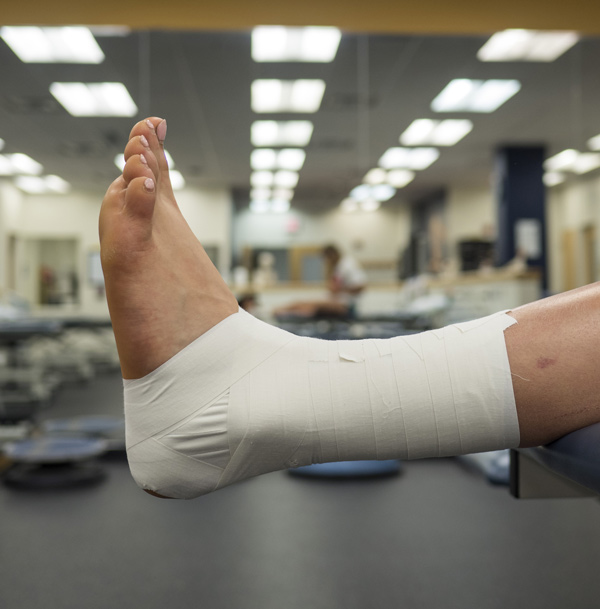
iStockphoto.com 999599254
Even though there have been numerous studies regarding prophylactic ankle taping, the way to control the increased mechanical laxity associated with their condition during dynamic activity is not clear. To investigate the effects of traditional tape (TT), fibular repositioning tape (FRT), and kinesiology tape (KT) on joint angles of the lower extremity, Songah Chae, a student in the Department of Movement Sciences at the University of Idaho, Moscow, ID, led a research team on the study, Influence of Prophylactic Ankle Tapes on Lower Extremity Kinematics during Stop-jump in Chronic Ankle Instability.4
The results showed that all three different tape conditions with TT, FRT and KT have been used for preventing the injury of ankle sprain.
“The peak angles of hip, knee, and ankle joint during a stop-jump task, with and without the tape application by three different tape conditions would suggest the prophylactic effect of ankle taping on the patients who suffer CAI,” Chae said. “We had expected to see the difference in peak angle of each joint across the condition but there was not a statistically significant difference. It was surprising that this result contradicts previous research suggesting ankle taping restricts joint range of motion.”
Although the results were gathered during a stop-jump task, the researchers believe further study needs to be conducted in diverse sports performance and real life, to examine the influence of different prophylactic ankle taping techniques on diverse sports performance, as well as muscle activation, during more dynamic tasks in the future.
Source:
4. Chae S, Chun Y, Pettaway A, et al. Influence of Prophylactic Ankle Tapes on Lower Extremity Kinematics during Stop-jump in Chronic Ankle Instability.








